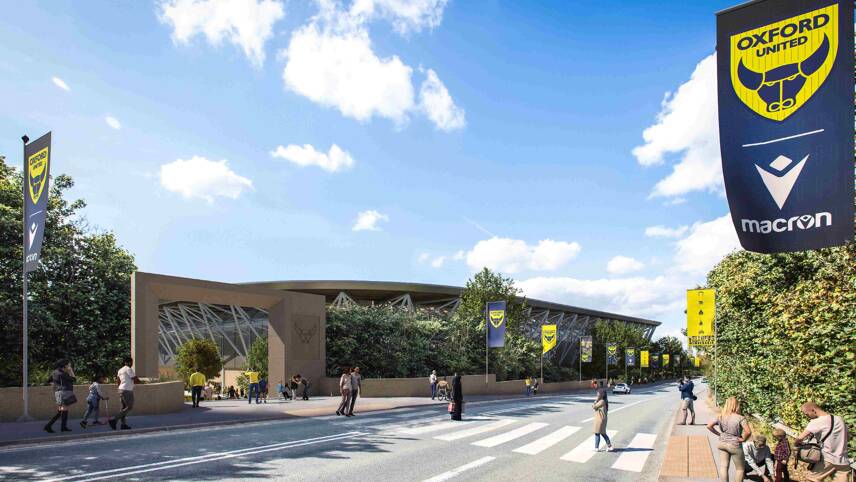
At a glance
Who: Oxford United Football Club, Ridge and Partner, AFL Architects, Mott MacDonald, Fabrik
What: Great Britain's first reinectric football stadium
Where: Near the Oxford Parkway Station, Great Britain
Why: To offer a permanent home for the club and to achieve sustainability, transport and community use goals
When: Planning permit granted in 2025; Follow construction time bars
The challenge
Oxford United needed a permanent home to replace its current short -term rental agreement. The location that is necessary to meet environmental, flood risks and cultural service restrictions and at the same time to support access via sustainable transport.
The solution
A new stadium that is operated exclusively through renewable energies with integrated public transport connections, cycling and pedestrian access as well as a design with significant measures and multi -use systems.
How the project works
The project team under the direction of Ridge and Partner with AFL Architects, Mott Macdonald and Fabrik developed the program after evaluating more than 60 possible locations. The selected location was selected for the proximity to public transport and the lack of large environmental or cultural services restrictions.
The stadium will use 3,500 square meters of roof mounted photovoltaic panels and an air source heat pump, which replaces fossil fuel systems and the annual CO2 emissions are reduced by about 80% compared to gas boilers. Energy -efficient building materials and constructions will further restrict operational demand.
The transport plans include access via the Oxford Parkway and Park & Ride train station with the aim of making up to 90% of the game time travel with public or active transport. The development will include new cycle and pedestrian paths, 450 cycle -parking spaces and dedicated shuttle services. The transport model was carried out to evaluate the traffic and integration of the matchday into the existing infrastructure.
The wider area includes hospitality and event facilities, a hotel, health and well-being and public open spaces. The landscape construction measures aim to achieve a net profit of 20% (BNG), including new tree planting, green roofs, rain gardens, ponds and wildflower areas. The design contains a steeply upturned seat bowl and a sloping roof line that can integrate into the surrounding forests.
The results
The Oxford United project is expected to provide a permanent stadium, increase capacity by 3,500 seats and contain measures to reduce carbon emissions and to improve biological diversity.
Business advantages
The full functioning of renewable energies will reduce annual CO2 emissions compared to gas heated stages by around 80%, reduce environmental impacts and the future tour of changes in energy regulations.
The integration of photovoltaic panels, air source heat pumps and energy-efficient design reduces the dependency on the national network and minimizes the running costs over time.
The biological diversity measures, including founding roofs, raincoats and tree planting, contribute to local ecological health and help to meet the planning policy requirements.
The transport strategy, which prioritizes public and active trips, reduces the vehicles associated with match days and improves accessibility for a wider spectrum of users.
Industry context
Sports stations in Great Britain have increasing pressure to reduce the surgical carbon emissions and integrate sustainable transport solutions. National net zero goals and sector-specific framework such as the UN sports for climate work influence the new stadium design.
Some clubs have implemented low -carbon measures, but fully electric stadiums remain rare.
The research results showed last year that the air-conditioned damage to football stadiums is expected to increase from $ 130 million in 2020 to $ 800 million by 2050 in the amount of $ 2050, including event locations for the 2025 World Cup.
Surface flooding and extreme heat were identified as the most common threats, with some places exposed to 2% of their current replacement value with annual losses.
Measures to reduce emissions, to improve energy efficiency and to include sustainable landscape design can help to alleviate these risks.
© Faversham House LTD 2025 Edie -Nachrichten article can only be copied or forwarded for individual use. No other reproduction or distribution is permitted without prior written consent.
